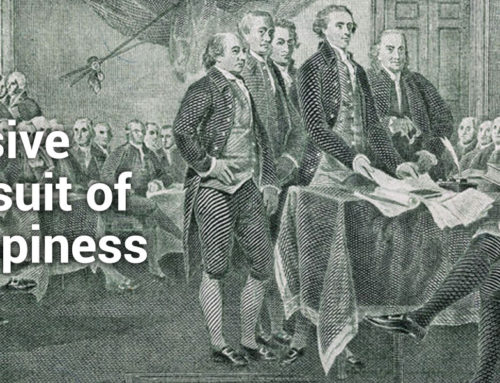Translating your strategic agenda into actionable objectives and managing to achieve those objectives
In previous STILE Points, we presented a detailed 7 step process to develop a winning strategy. The result was a strategic agenda that identified the critical success factors needed to achieve your vision. That’s the good news. The bad news is that even with a winning strategy, nearly 80% of all strategic plans fail according to Harvard professor, John Kotter, due to poor execution. Flawless execution requires the translation of your strategic agenda into actionable objectives and managing to achieve those objectives. This is the subject of the next several STILE Points.
Once a compelling strategy is formulated and a strategic agenda developed consisting of several strategic thrusts, the second process of the Performance Trilogy® involves execution, i.e. translating your strategic agenda into actionable objectives and managing to achieve those objectives. This is easier said than done. In my experience, I have rarely seen this translation from strategy to execution done very well for three reasons. First, translating strategic thrusts into actionable objectives requires that you pinpoint the critical success factors that ensure the desired outcomes. There must be a high degree of confidence that if I achieve the designated objectives, the desired outcome is assured.
Rarely have I seen this level of alignment. In the quest to produce actionable objectives, managers often take the easy way out with objectives that are easy to quantify and achieve. Oftentimes the critical success factor in achieving a strategic thrust involves betting on a highly specific objective that is very hard to achieve. For example, the winning of a strategic contract that would establish market leadership, developing that unique product that transforms the basis for your business model or making a strategic hire that changes the competitive landscape. Committing to this make or break objective that assures meeting your strategic thrust take considerable courage. Most managers feel safer hedging their bets with safer objectives even if they don’t assure success.
Second, individual team members have personal aspirations and agendas that do not align 100% with the proposed organizational strategy and tend to go off on tangents. I use the term institutional objectives to describe the high-level objectives that drive the organization’s strategic agenda. These institutional objectives become the performance plan of the CEO or COO of the company and his immediate management team. To implement these institutional objectives, they must be broken down into more discreet elements and cascaded to the next level of management to implement. The larger the organization, the more cascading is needed and at every level, the original institutional objective gets diluted due to the personal agendas of each level of management.
The perfect execution plan is one where every employee comes into work each morning knowing how his performance will contribute to meeting one or more institutional objective. This is rarely the case but the closer an organization comes to this ideal, the more likely it will succeed in executing its strategy. I will be presenting a disciplined performance management process in future STILE Points that mitigates this problem
Third, senior leaders incorrectly assume that the translation of strategy and development of a performance management process deals with operations. They believe that they shouldn’t be “getting their hands dirty” and delegate execution and the performance management process to their subordinates and middle managers. As a result, the time and effort of leadership teams throughout the organization, the scarcest resource in most organizations, is not being fully used to advance those critical institutional objectives that would ensure success.
Both the development of the strategy and translating it into an execution plan with actionable objectives must be done jointly between you and your team members. As discussed previously on leading the Performance Trilogy®, obtaining not only buy-in but also enthusiasm from team members is critical to success. Objectives should simultaneously support the strategy as well as the personal goals of every team leader. This is a good definition of “alignment”.
Each of the team member’s objectives must be directly linked to the advancement of the strategy such that the output of each objective results in the desired strategic outcome. This requires practice and experience to do well. The minimum requirement should be at least a 70% alignment (i.e. 70% of the objective’s output contributes to the strategic outcome). Any percentage lower than that would require a serious re-examination of that team member’s suitability for and/or willingness to take on the assignment. As the manager of the process you not only need to ensure such alignment but also make sure that it is happening at each level of the organization.
Unfortunately, too many managers view setting performance objectives as a necessary evil and an undesirable chore. After reading this and upcoming STILE Points, I hope that it will increase the awareness of the importance of performance planning and monitoring as a fundamental element in the execution process.
There is a common myth that is widely accepted as fact that a senior manager’s job is to focus on strategy and not get his or her “hands dirty” with operational issues. Nothing could be further from the truth.
Once the strategy is developed and an execution plan put in place with actionable objectives, the senior leader needs to take off his leadership hat and put on his management hat and ensure that team members stay on track. There is a common myth that is widely accepted as fact that a senior manager’s job is to focus on strategy and not get his or her “hands dirty” with operational issues. Nothing could be further from the truth.
Many a good strategy has failed from poor execution due to senior managers who “abandon” their direct reports once performance objectives are produced. It is the responsibility of the senior manager and architect of the strategy to ensure not only that the strategy gets translated into actionable objectives but also that performance is managed. This is accomplished not by macro managing or micromanaging but by active managing and regular governance on the progress of objectives. This involves supporting each team member with removing organizational barriers, identifying performance shortfalls, determining lessons learned, and correcting deficiencies.
In future STILE Points, we will outline a disciplined management process to ensure that your strategic agenda is being actively managed.



